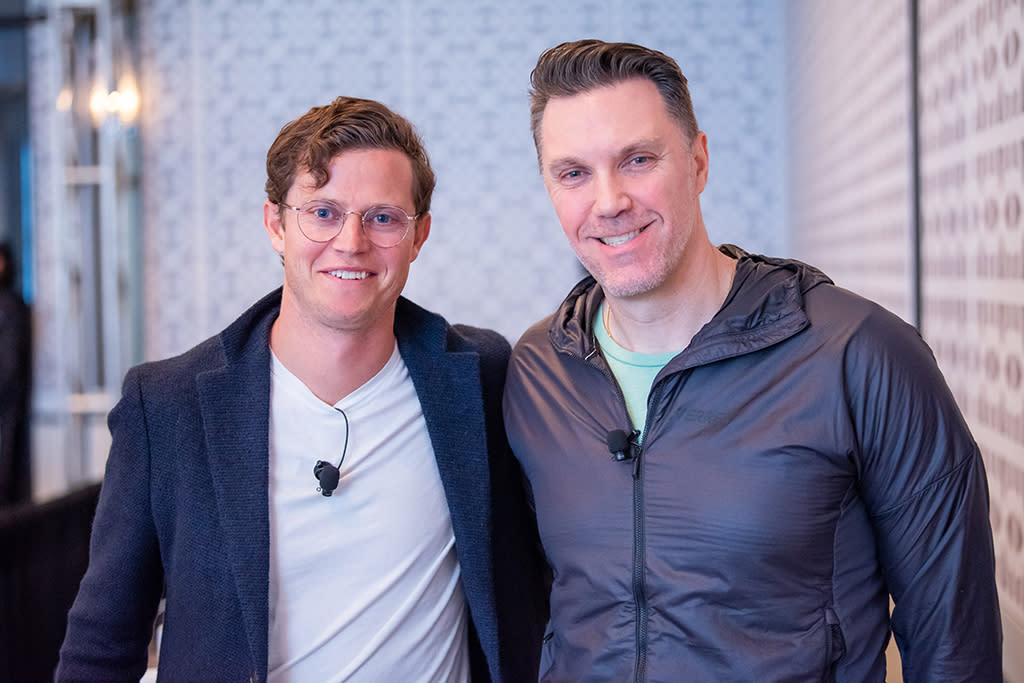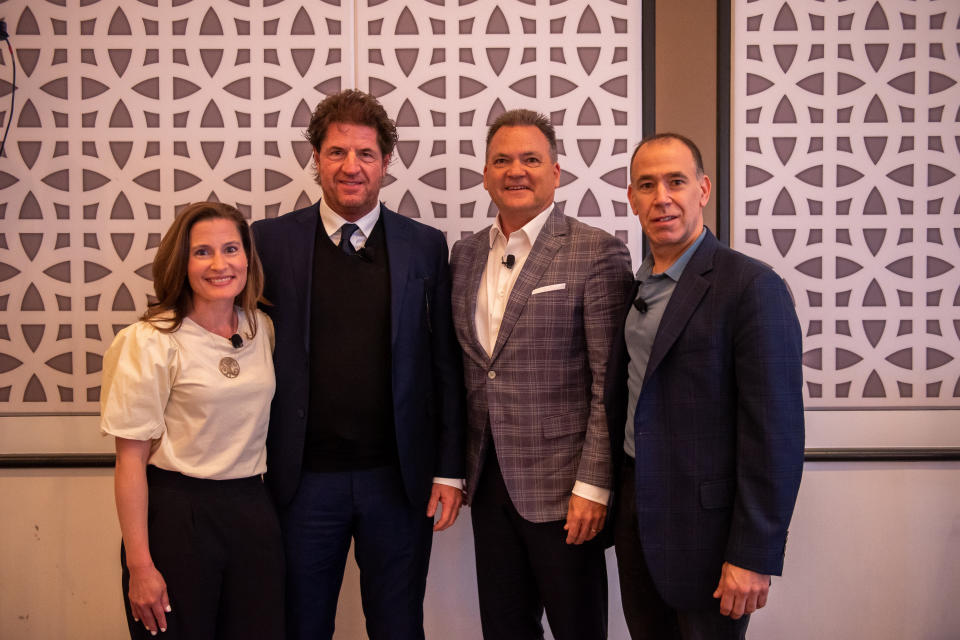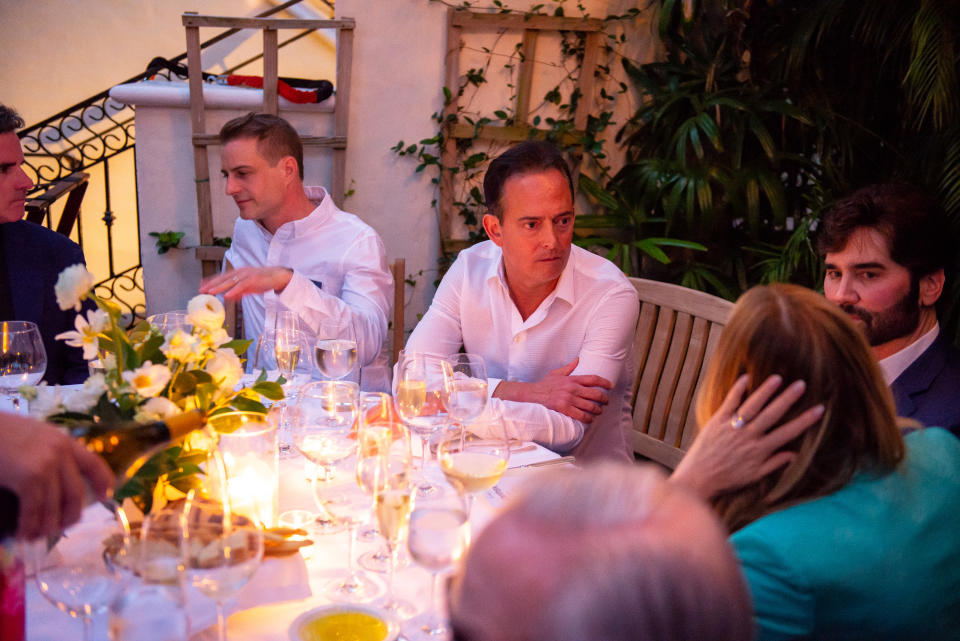FN CEO Summit Examines How Technology, Data and Personalization Are Transforming the Footwear Industry

During last week’s 2023 FN CEO Summit in Miami, brands, solution providers, manufacturers, and industry stakeholders took the stage to sort out the challenges and opportunities facing the industry — as well as share insights into how footwear is evolving in this post-pandemic period.
Within the context of marketing, branding, wholesaling, and customer engagement (as well as customer retention), the footwear industry seems to be at an inflection point where success is achieved by leveraging technology and data. But there are also people and the planet to consider in that journey.
More from Footwear News
Is Skechers Spelled With T? Mr. T Has Answers in New Skechers Commercial
Is US Production the Key to Footwear's Sustainability Dilemma?
While the industry as a whole is prioritizing sustainable and DE&I practices, there’s a lot more work to be done across the entire value chain. From a manufacturing perspective, reimagining the supply chain and leveraging new technologies can play a key role in mitigating several issues challenging the industry — including labor practices.
Elias Stahl, CEO and co-founder of HILOS, said during his presentation that the footwear industry has spent the past 60 years “gorging on low wages and cheap materials” while allowing brands “to grow through the equivalent of flood farming, deluging their markets and product while affording the waste and runoff.”
Stahl said when wages climbed in Japan, “we went to China. And when China got risky, we went to Vietnam and India. We could afford the runoff, overproducing 20 to 30 cents on every dollar, just as long as costs were kept low. That era is coming to an end, but those who act on that realization today won’t end with it. The world is running out of cheap labor and running out of patience for the polluters.”
The CEO said the industry makes 24 billion shoes annually, and sending one out of five shoes to a landfill is not sustainable. But Stahl said the industry faces a historic opportunity right now “to envision a completely new supply chain, one where a physical product is made at the speed of digital, locally and on-demand, from design through to fulfillment. Instead of being an industry centered around where to make products around the world, we can shift to working on how we make products — so we can make it anywhere.”
Stahl said computational design, 3D printing, knitting, and material innovation “are going through a revolution in capabilities that, when brought together, unlock radically new ways to make shoes.”
For its part, HILOS blends 3D printing and algorithmic design for an on-demand zero-waste future, “powering an end-to-end platform for a digitally-driven product from design to ship,” Stahl said, adding that the company was “founded from the realization that if you’re going to reinvent footwear supply chains, you have to reinvent shoemaking, which means creating new ways to assemble modular footwear — think fewer component parts, less labor, no glue, that allows for local production and fulfillment, 72 hours click to ship.”
During another session, titled “Mastering the Art of Wholesale: How to Make it Enhance Your Bottom Line,” Sarah Catalano, Senior Account Executive at Cole Haan, Fabrizio Gamberini, Global Chief Brand Officer and President of Vibram Corp., Jeffrey Shirhall, Vice President of Sales at Cole Haan, was joined by Michael Ganci, Senior Vice President, B2B GTM at NuORDER by Lightspeed, to share insight into creating a sustainable supply that is also profitable.
NuORDER is a B2B e-commerce platform that connects more than 3,000 brands and over half a million retailers, “to power omnichannel selling, streamline assortment planning, and maximize sell-through,” Ganci told attendees. The panel noted a shift in the market as brands are moving from a DTC model spurned on by online sales during the pandemic to selling wholesale again. Driving this shift are consumers who are returning to physical stores to experience their favorite brands while discovering new ones and delighting in the shopping experience itself.

Justin Namon for Footwear News
Gamberini said the number one reason for a return to physical stores is convenience, “because you can go inside the store, and you get immediately what you’re looking for. There is a brand relevance piece, so if you have their right brand, at the right time, most likely you will be able to convert the traffic that you’re getting in.”
He also said there is an element of “trust in the local community, especially with Gen Z consumers. More and more are trying to buy locally, so if you happen to have retailers that are carrying your brands locally, many times, that’s a winning proposition too.”
But the old wholesale model is not designed for the current market and consumer demands. This includes the more traditional, large-scale trade show, the panelists said. While big trade events are clearly not going away, the panelists see emerging, localized events popping up, as well as platforms that facilitate face-to-face meetings.
Shirhall said the opportunity “to sit face-to-face with customers is so important, and so we look to continue to maximize on that and to create new ways of doing business when we are together with them,” he said. “Are there as many shows? No. Are they as frequent? Absolutely not. And that’s really where NuORDER has come in, allowing us to create an account-facing, customer-facing presentation that may occur over Zoom, may occur over [Microsoft] Teams, or may occur differently than it used to. But we can convey a product story, an assortment story. We’re able to build into their business a service-oriented manner and bridge the shift away from these trade shows.”
Catalano agreed, but noted this shift was happening before the pandemic, “and like most of the things we’ve discussed today, COVID just accelerated the shift away from hundreds and thousands of people joining in Las Vegas, twice a year, to now you’ve seen the rise of the regional shows come back.” She also noted that the digital tools and platforms available now were not around pre-COVID. Catalano said working with NuORDER allows brands to reach out to an established list of marketplace customers.
“There are over 10,000 retailers that are there, some of which we already engage with, some of which we’ve been able to solicit. And actually, both ways,” Catalano said. “It’s almost like a mini-LinkedIn or mini-Facebook, where new specialty retailers can contact us through the NuORDER portal, and we can entice them with our established assortment. This is a game-changer as far as I’m concerned.”

Justin Namon for Footwear News
Another game changer in footwear aimed at improving the customer experience and creating greater personalization while reducing returns is fit technology. In the session titled “Utilizing 3D Scanning and AI to Enhance Your Business,” Dr. D’Wayne Edwards, Founder of Pensole Lewis College of Business & Design, Justin Kehrwald, President & Chief Executive Officer at Tradehome Shoes Inc., Jeff Stern, Senior Vice President of Rocky Brands Inc., and Larry Schwartz, Chief Executive Officer of Aetrex Inc. discussed how fit and AI-powered technology is reshaping the industry.
Before diving in, Schwartz explained how Aetrex works and what it offers retailers and brands. Schwartz said the company offers three different foot scanner models. One is a pressure scanner. The second model is a 3-D fit scanner. The top-tier model combines pressure and 3-D scanning capabilities into one machine. Aetrex also offers FitGenius, which is a proprietary plug-in for e-commerce sites to mitigate returns. Aetrex also has a data portal for use in product development and a mobile platform called SizeRight.
Kehrwald said Aetrex’s technology helps “with customer retention, and with getting new customers to shop with us.” But he acknowledged some reluctance at first when the company considered implementing the scanning technology — especially since the company had strong relationships with other brands in the orthotic and insole space, he said.
But that quickly changed quickly after partnering with Aextrex. Kehrwald said, “While our revenue doubled, our insole and orthotic business has nearly quadrupled. And the other partners that we work with, their sales haven’t dropped off. So Aetrex has absolutely added to the revenue of our business.”
For his part, Stern, whose business is managing safety footwear programs for Fortune 500 companies, said they go in “and from soup to nuts, we manage the entire program so that their safety teams or their HR teams don’t have to deal with any of it.” Prior to leveraging Aetrex technology, Stern said the management of the footwear service programs was done via trucks. With Aetrex deployed, all the trucks were eliminated. “We showed up with the Aetrex machine and really changed the game,” Stern said.
Stern also noted that part of the company’s value proposition is offering free freight, “whether it’s returns or first deliveries, every freight that we offer to the customer is free. So, we have a very vested interest in getting that fit right the first time and not doing that return because a return can cost us somewhere between $15 and $25 just in freight costs depending on where it’s coming from. So, there’s a significant saving and a good ROI on investing in this [Aetrex] equipment.”
Stern also said prior to using Aetrex technology, return rates were between 13 and 16 percent. Now, it averages around 7.6 percent. “And we continue to drive that down,” he said. “A lot of that is because of FitGenius; because not only do we scan the feet, but we also take the FitGenius AI, apply that to the footwear catalogs, the curated catalogs that we create, and then we can come back to [customers] with a recommendation on a percentage fit, say 98 percent fit. Or if it’s an 85 percent or an 80 percent fit, we might say it is not the best for you. This allows us to get a better fit the first time and continue to work on reducing those rates.”
After Edwards saw Aetrex scanners in action, he was immediately won over and had a device sent to the school. “Because, as a designer for the last three decades, the more information you can have to inform your design process, the more accurate the product will come,” Edwards said. “And so, by us being a college that focuses specifically on footwear, we saw the benefit instantly.”
The scanner installed at the college was the Albert Pro, and it was first used in a New Balance class. “It was perfectly timed because during that session, the students were designing five different products for five different athletes, and they all ranged in different sports and activities and performance features,” Edwards said. “Having that data and to be able to scan not only their feet but then even inviting in athletes that were represented for those individual sports, informed how they designed the product. And as we presented it to New Balance, they loved the direction of visual research and everything that we were able to acquire from the scanners.”
Edwards added that there are expanded opportunities associated with the technology “by being at the very beginning of the design process, even on the manufacturing side,” while also helping to inform the creative process as well.
Regarding marketing, customer acquisition, and retention in this post-pandemic period, speakers at the summit said personalization is essential. And to make it work, brands must leverage data and technology. During the session titled, “Modernizing Brands’ GTM Approach with Key Accounts,” Michael Kadous, General Manager of North America at Adidas Outdoor, sat down with Dan Leahy, Chief Executive Officer and Co-founder of MakerSights, to share insights into how Adidas Outdoor developed its marketing and engagement strategy.
Kadous said Adidas had a novel idea: create an entrepreneurial business within the larger business. Kadous said the reason was that “it’s hard to do small things in big companies. It’s also hard to build businesses within those small companies. You must literally carve them out, invest in them, give them time, energy, and opportunity, and let them go, give them freedom.”
Kadous was tasked with forming a team and then giving them problems to solve. His team included experts from different corners of the value chain. After a time, they created a playbook that could be scaled across the entire brand. And it worked.
One of the lessons learned was balancing what the consumer wanted with what direction the brand wanted. “But there’s a lot of fear when you start to drive consumer insights and collect information from the consumer and be like, ‘Hey, you have a confidence model in these five things, but this colorway that you really love — it’s not going to work.’”
“From a design side, creation side, egos come to play, experience comes to play, bias comes to play,” Kadous said. “We must work those things through the process.” And that included working with MakerSights as a partner (emphasis on the word “partner”).
“That was when of the biggest unlocks I had. We played with platforms before, but it’s the partnership that makes it work,” Kadous said, adding that when he first met with the MakerSights team, “they actually understood everything that we’re going through.”
From here, investments in technology from brands and retailers across the industry will likely continue. And as more data is culled, the consumer experience and the product itself will only improve. With DE&I and sustainable practices, while there’s more work to be done, there is clearly more thought leadership and implementation as compared to the pre-pandemic period.
Best of Footwear News
What Is Gisele Bündchen's Net Worth? Here's How Much Money She Makes & How She Spends It
COVID-19 Cancellations Are Back for Sports, Broadway, & Other Major Events
Sign up for FN's Newsletter. For the latest news, follow us on Facebook, Twitter, and Instagram.

